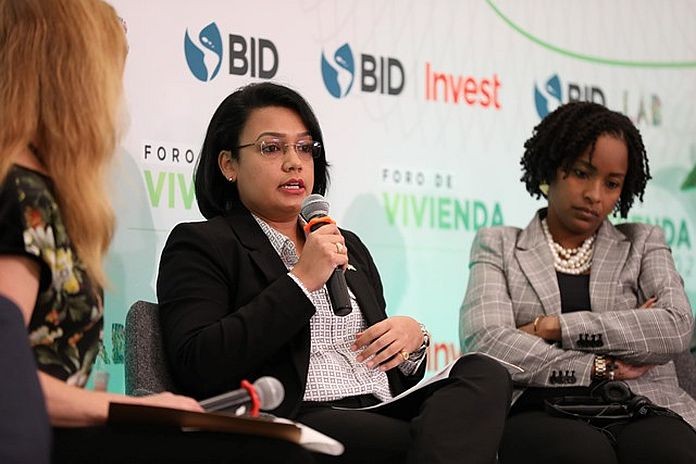GEORGETOWN, Guyana, (DPI) – Some 401 residents of Lethem, Region Nine signed on to the Central Housing and Planning Authority’s (CH&PA) Lethem Housing Support Programme, a government assistance initiative for the Lethem Housing Construction Project. This was disclosed by housing and water minister, Collin Croal on Thursday.
The Lethem Housing Project is an initiative announced by president, Dr Mohamed Irfaan Ali, during an outreach to the township in August this year. The initiative, valued at $600 million, will see the government contributing $1 million each to 600 low-income homeowners to mitigate the cost of their home construction.
President Ali had also announced that the Guyana Bank for Trade and Industry (GBTI) and the New Building Society (NBS) would finance the remaining $2 million for the prospective homeowners at a rate of 3.5 percent.
The collateral-free gesture from the two financial institutions would see the 600 allottees repaying just about $14,000 per month.
Republic Bank is the most recent bank to come on board with the project. On Thursday, the minister stated that the materials and labour for the home construction will be procured locally.
“The beneficiaries from those programmes come from three cluster areas. That is for the Tabatinga area, Culvert City, as well as our new housing development in Lethem. And those are persons that would have benefitted from an allocation recently,” he said.
He explained that the housing development programme caters to persons who are not financially equipped to construct their homes upon receiving a house lot to begin building their new homes
“So here you have a programme that has never been implemented before in Guyana. And there is an opportunity for people to own their own homes, and start. But the key criterion is that you must own your lot. So those are the persons who are the beneficiaries,” the minister said.
The collaboration between the government and commercial banks sees up to $1.8 billion being injected into the district to promote the housing drive.

Meanwhile, the minister within the housing and water ministry, Susan Rodrigues during her recent participation in a panel discussion at the Housing Forum 2022, hosted by the Inter-American Development Bank (IDB) Group in Washington DC, said the housing and water ministry has seen a 300 percent increase in house lot allocation since the PPP/C government took office in August 2020.
“We see the transfer of that wealth to our infrastructure system and to our housing investment, where we have seen the housing allocation increase by 300 percent from the previous years. There is a lot of investment taking place,” the minister said.
Guyana has a projected growth rate of 47 percent. This transfer in investment, she explained, will be trickled down to social services and better infrastructure aimed at improving the well-being of citizens.
“Of the total applications in our system, 75 per cent of that is from low-income households. So, our housing programme is largely based on supplying affordable housing to our low-income population,” minister Rodrigues added, “so when we invest in our housing programme these are the people, these are the groups that are the main beneficiaries.”
Minister Rodrigues highlighted the IDB-funded adequate housing and urban accessibility programme, where core homes are provided to low-income families. While under the Home Improvement Subsidy initiative component, families living in poor structures are given $500,000 worth of building materials to carry out repairs or expansion to an existing property.
The government has so far distributed more than 16,000 house lots to Guyanese, since taking office in August 2020, in keeping with its target of allocating 50,000 house lots within its first five years in office.
“So, we subsidise the service hotspots that we distribute. So, 82 percent is subsidised by the government and only 18 per cent is paid by persons of low affordability. And this has service lots, meaning the government pays for the infrastructure and the installment of the utilities, water, electricity and so on,” she explained.






